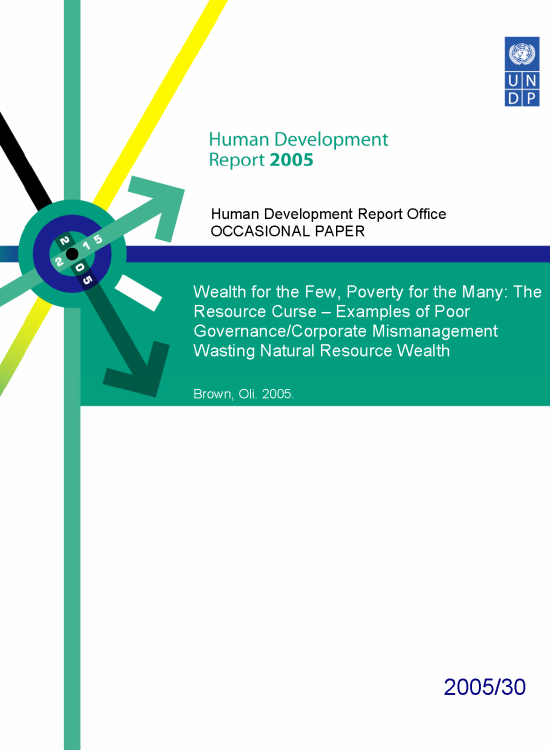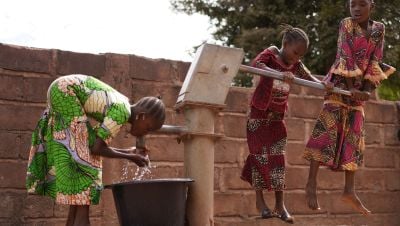Wealth for the Few, Poverty for the Many
The Resource Curse – Examples of Poor Governance/Corporate Mismanagement Wasting Natural Resource Wealth

Download Report by Language
Document
hdr2005brownoli30.pdf
(121.11 KB)
Citation
Brown, Oli. 2005. Wealth for the Few, Poverty for the Many: The Resource Curse – Examples of Poor Governance/Corporate Mismanagement Wasting Natural Resource Wealth. New York.
Wealth for the Few, Poverty for the Many
The Resource Curse – Examples of Poor Governance/Corporate Mismanagement Wasting Natural Resource Wealth
Posted on: January 01, 2005
U.S company Freeport McMoran hit the headlines in the mid 1990s accused of serious human rights and environmental violations in its Grasberg mine in Irian Jaya. In its annual report, Freeport acknowledges responsibility for dumping over 125,000 tons of potentially toxic tailings into the rivers of Irian Jaya every day. The mine was the world’s largest gold mine and the third largest copper mine in the world valued between $50 and %60 billion. According to reports by the BBC the mine has been responsible for the deaths of hundreds of people since the mine began operations in 1972 turning a blind eye while the Indonesian military killed and tortured dozens of native people in the area around the mining concession. Freeport is the largest tax payer to the Indonesian government but denies allegations of on-going human rights abuses and theft of native properties. Its wealth stems from a mining license agreement signed in 1967. At this time Indonesia did not have authority for such a license and would be dependant on the Papuan people voting against their own independence from Indonesia (which given their ethnic Melanesian ancestry was an unlikely prospect). The original license sold to the US company gave them mining rights over part of the Amungme tribal homeland. Being a sacred mountain, and negotiated without the permission of, or payment to, the Amungme people, this open-cut mining operation understandably caused great upset. Nevertheless, the company holds a 30 year exclusive mining license for the region from the official opening of the mine (1981). In 2003 the company was forced to

